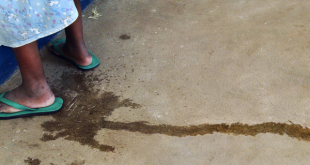
BY EDWARDS AKAKI AND MATHEW ABEKSON
MOROTO: FRIDAY, JULY 29, 2022
As the bright morning sun dapples, the semi-arid plains of Karamoja sub-region in northeastern Uganda spring to life.
After the morning household errands, they throng with empty jerrycans to Nakapilimen, a local brew cellar, one kilometer from Moroto town centre while others head to Nabatoa market, previously a slaughter place for animals by steak vendors which is now turned into a bustling trading centre.
They fill the jerrycans with “kwete,” the sacred drink which keeps the Karamoja people socializing.
Elders speak of the hidden treasures of this cherished brew as they sit in circles of small groups chattering the goings-on in the community.
At lively Nawanatau village market, Loputuk sub-county, the sight of jolly young men and the elderly surrounding adorable women who sell kwete in plastic buckets in the afternoon hours of a Tuesday is captivating.
The secret benefits of this drink is hidden in the perceived “low alcohol content and high nutritional value” that only entices people a little to mix amenably than get drunk.

Industrious Karamojong women devote a lot of time to prepare “kwete” and make it the drink worth the values society accords it.
Angela Lona, a seasoned brewer who deals in Nakapilimen market, narrated that the processes involved in making kwete can take over a week to get the final product.
Ingredients
Kwete is made from raw materials purely consisting of local content such as sorghum flour, maize flour, yeast made from sorghum and millet, and then cassava.
First, the maize grains and sorghum is soaked in water for about five days to sprout, it is then mixed with cassava flour and mushed with grinding stones before spreading for sun drying.
When dried, the content is finely grinded and toasted in hot water before it is allowed to cool overnight.
The following morning yeast is added to aid the fermentation and generation of the alcoholic content over 24 hours.
To make yeast, the Karamojong women soak sorghum or millet grains in water for three days and the sprouted grains are dried and finely grinded to be added to the main ingredients that had stayed moist for a longer period.

When deemed ready, the women use small bags of cloth to filter the drink through hand squeezing to get the bubbling cream product.
Lona warrants that the product’s lifespan is only 24 hours before it gets bad by attaining a sour taste and this explains why Karamojong people don’t joke consuming kwete as soon as it is prepared by their women.
Due to the general rise in commodity prices, the prices of the cassava, sorghum, maize and millet flour has also been affected leading to increased production cost of making the brew.
Consequently, the retail prices of the brew have doubled over the last few months with 100ml cup moving from sh100 to sh200, 300ml cup rising from sh200 to sh400 and a 2 litres jug of kwete selling at sh2,500 up from sh1,500.
“I sell kwete between sh35,000 and sh40,000 daily and in this the daily profit is between sh10,000 and sh15,000. This is what is helping me to feed my family,” Agnes Nakiru disclosed.
The brewers get additional benefit by exchanging the residue for firewood brought by people who come from the kraals who in turn use it as animal feed.



